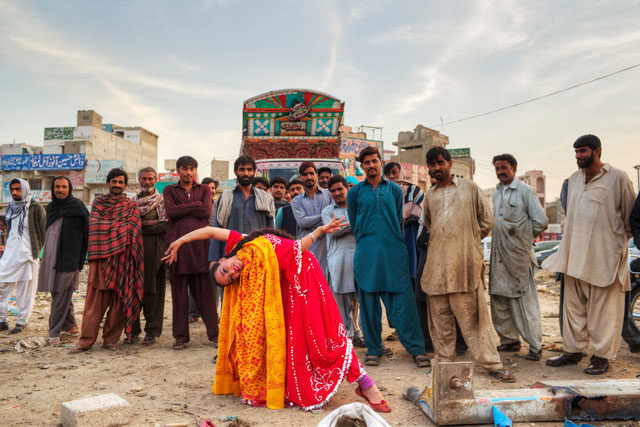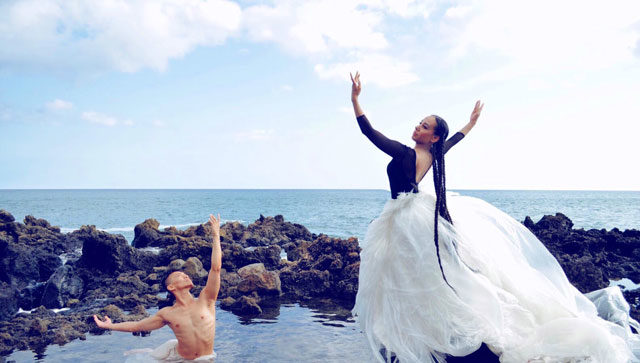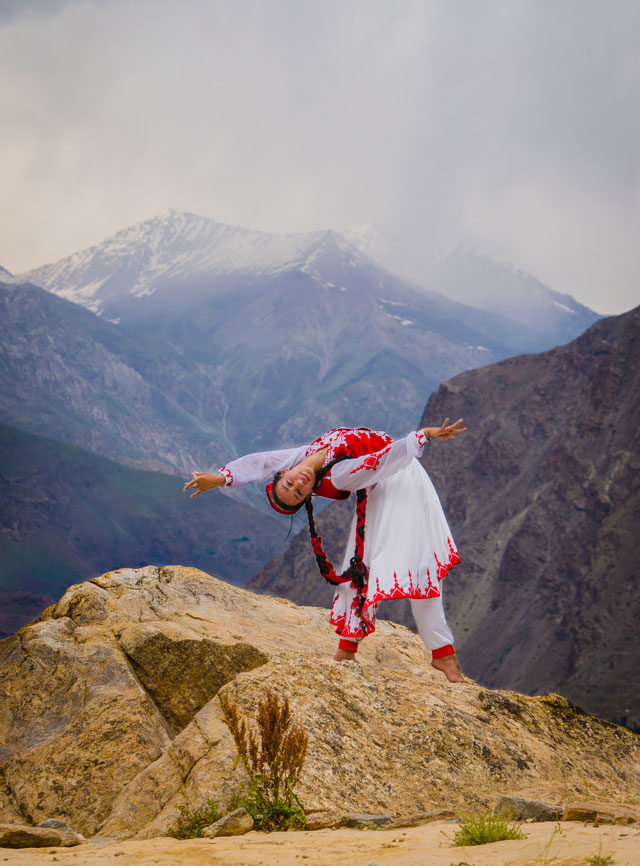Tara Catherine Pandeya
Enter the Other
Tara Catherine Pandeya’s performance operates at emotional, gender-based, socio-historical, and geographic points of friction. In developing her Forecast project, the artist searches for ways to question borders through dance.

Pandeya’s one-woman show explores themes of anger, sadness, fear, and bliss. Her performance is rooted in a place that both does and does not exist: “the fictional land of dance: Raqsistan.” A neologism of “raqs” (dance) and “istan” (land of), the fictional Central Asian realm “traces cultural pluralism through an odyssey of movement, music, technology, emotions, and cultural traditions. Central Asia was once a crucial midway point between East and West on the Silk Road, known for cross-cultural pollination and innovation. Today, the region is often misrepresented, misunderstood, or simply unknown to audiences in the West.”
“I have a near-pathological curiosity for the world,” says Pandeya. “The reason I dance is to build cross-cultural bridges; to connect with people; and to evoke wonder, dialogue, and questioning in others. I live at the intersection of my experiences, which fundamentally impacts and steers my work. I have been collaborating with a 3-D mapping technology artist and an international roster of musicians and singers to synchronize elements of my choreography with unique imagery and sound. One of the pieces I am creating will utilize traditional male-only dance vocabulary, combined with interactive costuming, to highlight my choreographic voice.”

Playing with expectations surrounding gender, traditions, language, and identity, Pandeya’s performance provides the audience with a transformational portal for marginalized experiences. Forecast has enabled Pandeya to put her visionary concepts into physical form.
She describes her ultimate goal as “creating more beauty in our world and making space for storytelling filtered through more diverse lenses, with an emphasis on the female voice. In this era of heightened xenophobia and Islamophobia, it is crucial to reveal intersecting points in our shared histories to take the fear out of ‘otherness.’ When unique dance forms like these are lost, we lose vital pieces of our humanity and collective history.”

Photos: Jazmyne Geis, Kohi Marri, Roma Buryak.